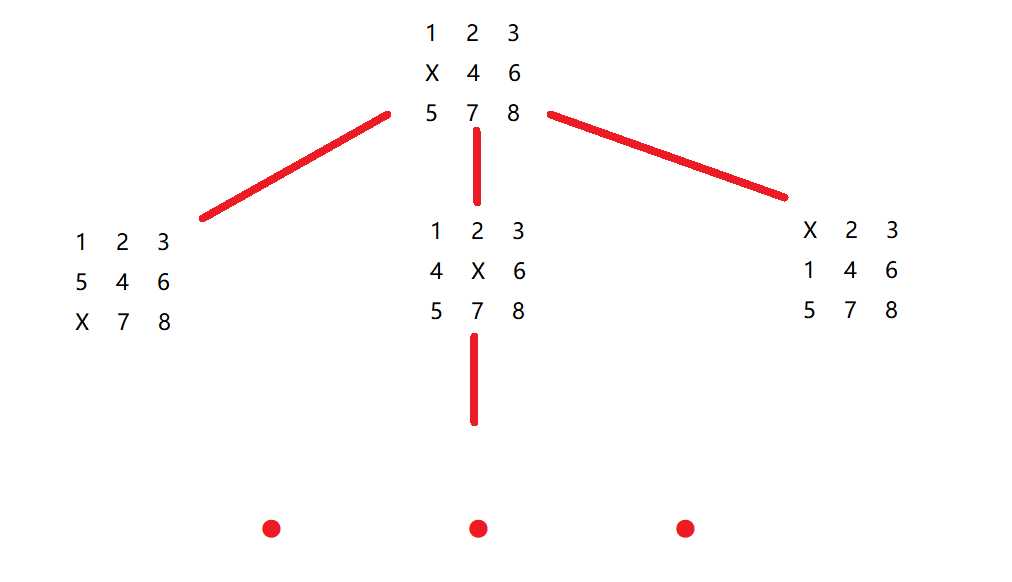八数码问题
在一个 3×3 的网格中,1∼8 这 8 个数字和一个 x 恰好不重不漏地分布在这 3×3 的网格中。
例如:
1 2 3
x 4 6
7 5 8
在游戏过程中,可以把 x 与其上、下、左、右四个方向之一的数字交换(如果存在)。
我们的目的是通过交换,使得网格变为如下排列(称为正确排列):
1 2 3
4 5 6
7 8 x
例如,示例中图形就可以通过让 x 先后与右、下、右三个方向的数字交换成功得到正确排列。
交换过程如下:
1 2 3 1 2 3 1 2 3 1 2 3
x 4 6 4 x 6 4 5 6 4 5 6
7 5 8 7 5 8 7 x 8 7 8 x
现在,给你一个初始网格,请你求出得到正确排列至少需要进行多少次交换。
最早接触八数码问题是人工智能的实验,给了源码让我们改算法参数(笑死,根本不知道怎么改)
当时给了好几种算法,这里介绍一下BFS算法实现八数码问题。
事实上,就是将‘x’附近的数字进行移动,将每一步的过程以类似于树的状态广度遍历,也可以简单理解为遍历所有可能性,看最早到达目的状态的步数是多少。
- 具体实现:
#include <iostream>
#include <algorithm>
#include <cstring>
#include <queue>
#include <unordered_map>
using namespace std;
int BFS(string start)
{
string end = "12345678x";
queue <string> q; //状态队列
unordered_map <string, int> dis; //距离数组
q.push(start);
dis[start] = 0;
int dx[4] = { -1,0,1,0 };
int dy[4] = { 0,1,0,-1 };
while (q.size())
{
auto t = q.front(); //记录队列头部
q.pop();
int distance = dis[t];
if (t == end) return distance; //达到目标状态,返回距离
int k = t.find('x'); //找到x的坐标
int x = k / 3, y = k % 3; //将对应的一维坐标改为二维坐标
for (int i = 0; i < 4; i++)
{
int a = x + dx[i], b = y + dy[i];
if (a >= 0 && a < 3 && b >= 0 && b < 3) //没有越界
{
swap(t[k], t[a * 3 + b]); //将与x相邻的方块进行移位
if (!dis[t]) //如果t状态的距离没有改变过
{
dis[t] = distance + 1;
q.push(t); //状态存入队列
}
swap(t[k], t[a * 3 + b]); //恢复现场
}
}
}
return -1;
}
int main()
{
string start;
for (int i = 0; i < 9; i++)
{
char c;
cin >> c;
start += c;
}
int ans = BFS(start);
if (ans != -1)
cout << "转换步数:" << ans << endl;
else cout << "无法转换!" << endl;
return 0;
}




0 条评论